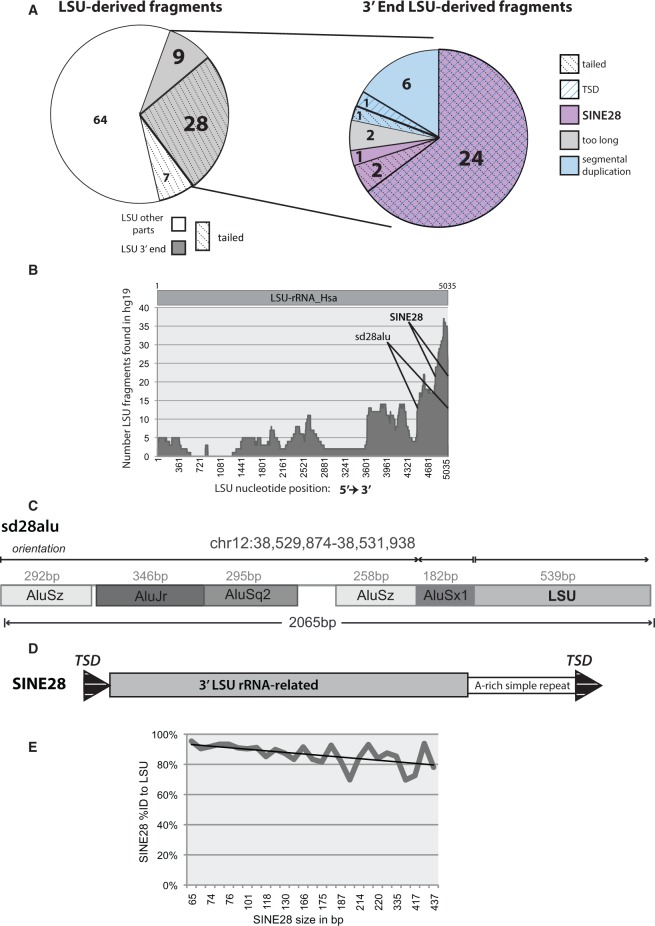Fig. 1.—
Novel SINE derived from the 3′-end of the LSU rRNA identified in the human genome. (A) (Left) Total distribution of LSU-derived fragments defined by portion (3′-end or other) and whether they contain a tail. (Right) Classification of SINE28s among all 3′-LSU fragments by feature, including: presence of a tail and/or TSD, appropriate length, and evidence for segmental duplication. (B) Nucleotide by nucleotide count of the number of LSU fragments (y axis) found in the human genome corresponding to a specific LSU nucleotide position (x axis) as aligned to the LSU sequence to hg19 via BLAT (Kent 2002). (C) Structural features of the larger 3′-LSU fragments that originate from segmental duplications (sd) and are part of a cluster of repeats that includes several Alu elements (sd28alu) found on chr12. (D) Structural features of SINE28 including the LSU RNA “head,” A-rich simple repeat tail, and TSD. (E) The percent identity of SINE28s (y axis) compared with LSU-rRNA_Hsa consensus sequence is inversely related to element length (as indicated by the trend line; x axis).

